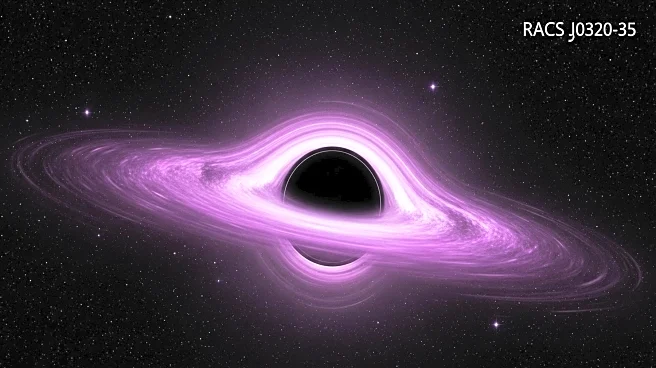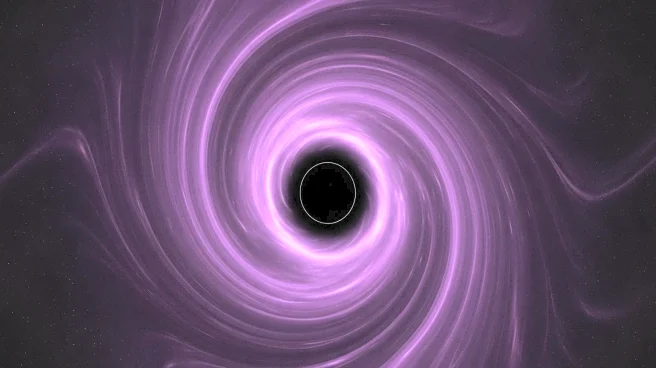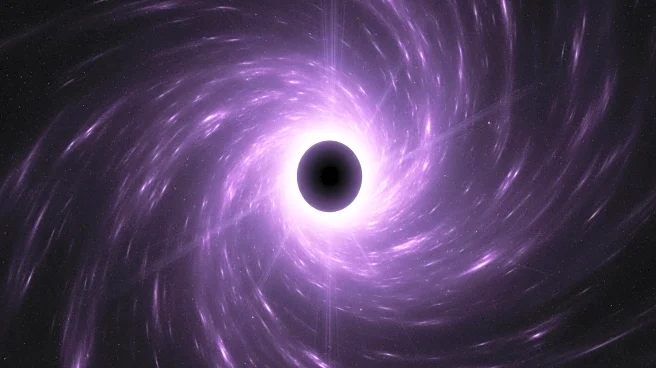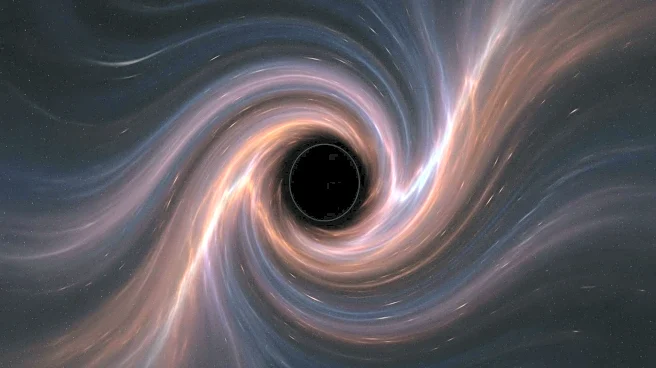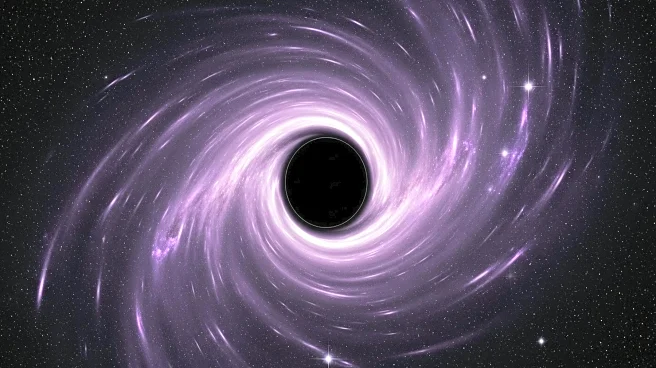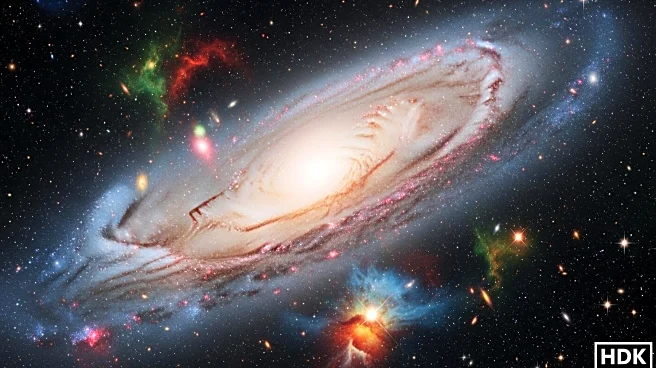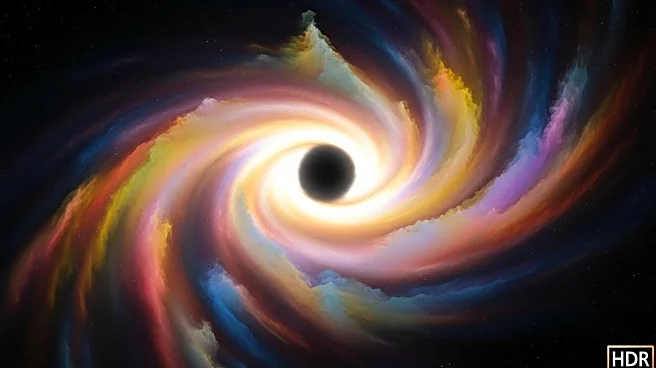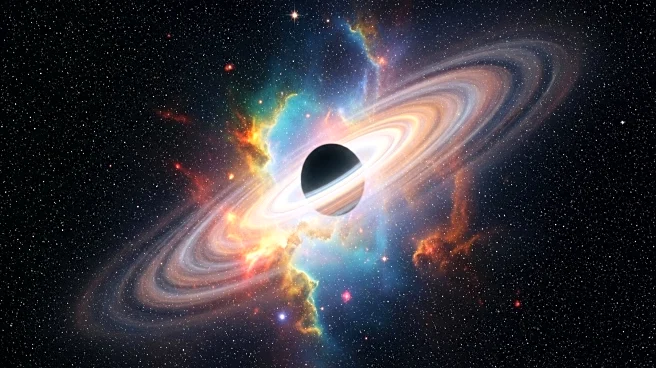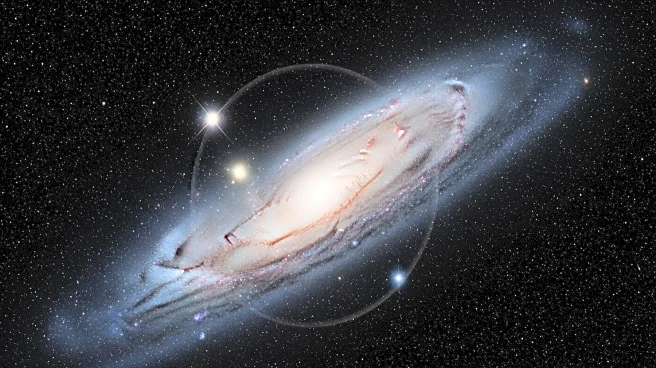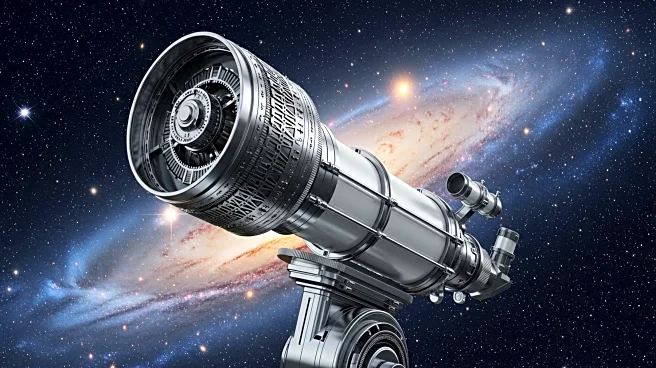What's Happening?
Astronomers have discovered a supermassive black hole, named RACS J0320-35, growing at an unprecedented rate, challenging existing theoretical models. Located in the early universe, this black hole is expanding at over twice the speed previously thought possible, consuming matter at a rate of 300 to 3,000 solar masses per year. The discovery was made using NASA's Chandra X-ray Observatory, providing insights into the mechanisms that allowed such astronomical objects to form shortly after the Big Bang. This challenges the Eddington limit, which describes the maximum growth rate of black holes.
Why It's Important?
The discovery of RACS J0320-35 has significant implications for understanding black hole formation and cosmic evolution. It challenges existing theories about the growth limits of black holes and suggests that super-Eddington growth may have been more common in the early universe. This could revise models of cosmic evolution and illuminate the processes that governed the formation of massive cosmic structures, potentially affecting the formation and evolution of galaxies.
What's Next?
Further research on RACS J0320-35 and similar objects could reveal new insights into the universe's earliest epochs. Scientists aim to determine whether unique environmental conditions in the early universe facilitated such rapid growth or if unknown physical processes are at play. This could lead to the discovery of new physical laws governing the universe.
Beyond the Headlines
The detection of RACS J0320-35 opens up new avenues for astrophysical research, challenging existing theories and prompting scientists to explore unconventional ideas about black hole growth. It encourages a reevaluation of how cosmic phenomena are understood and may lead to long-term shifts in scientific approaches to studying the universe.

